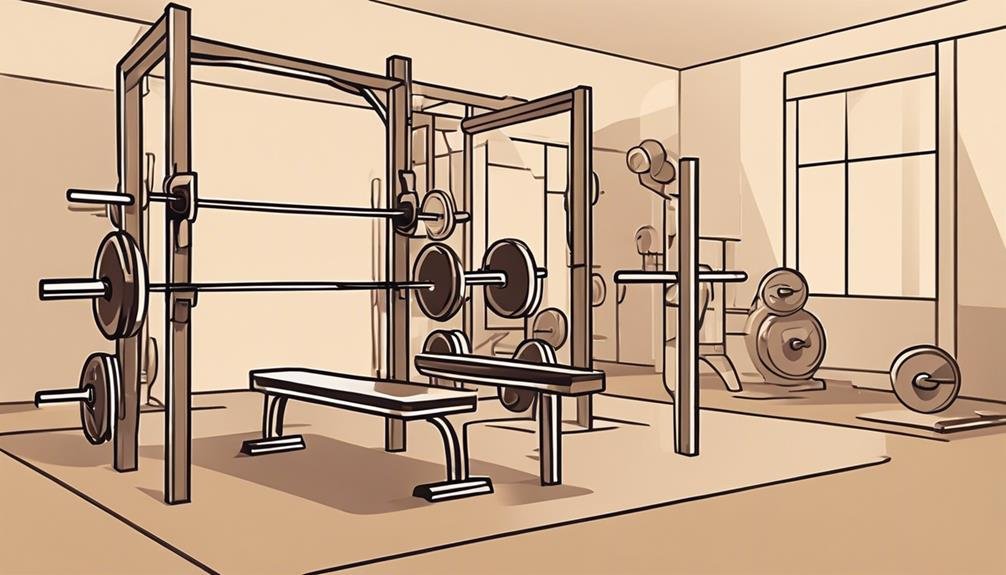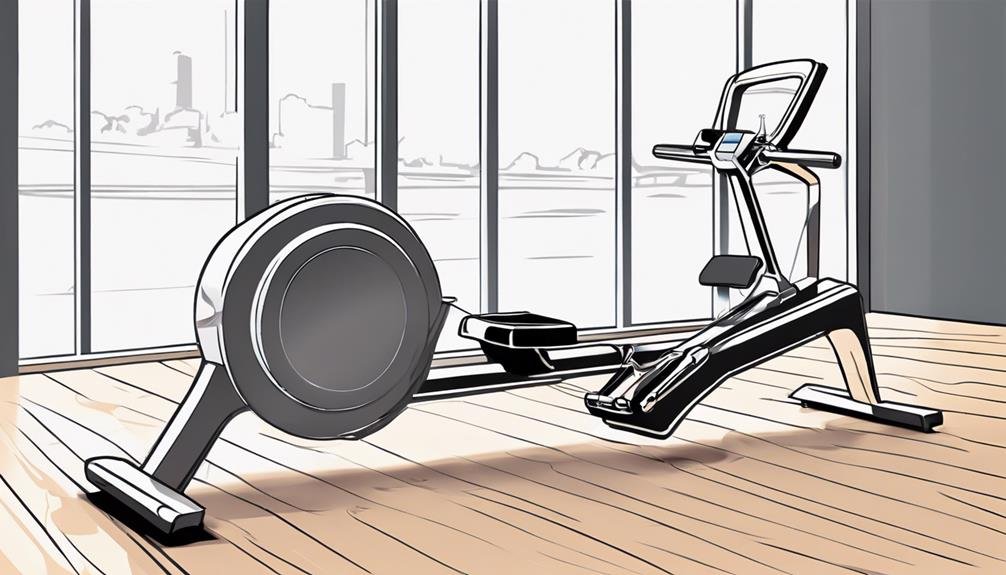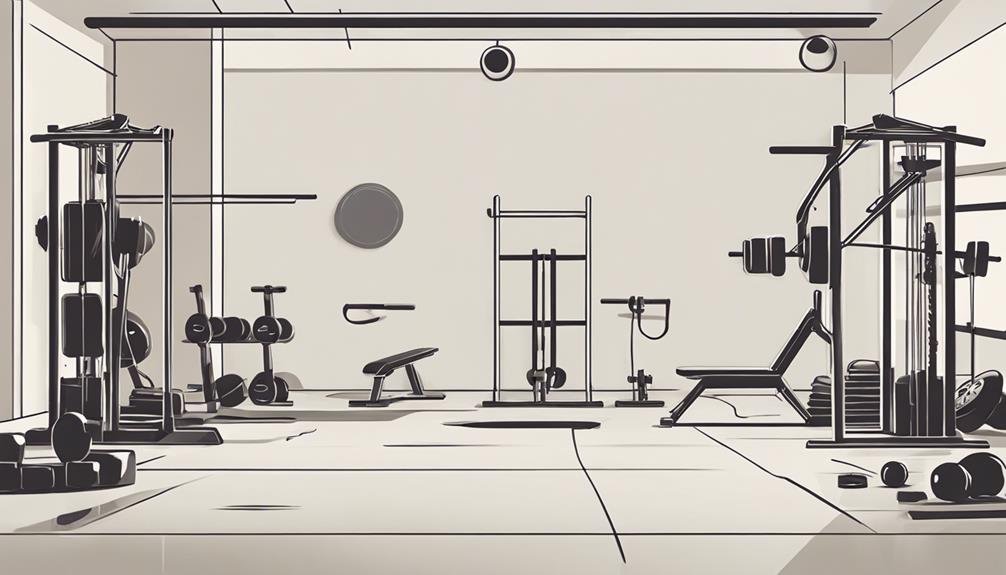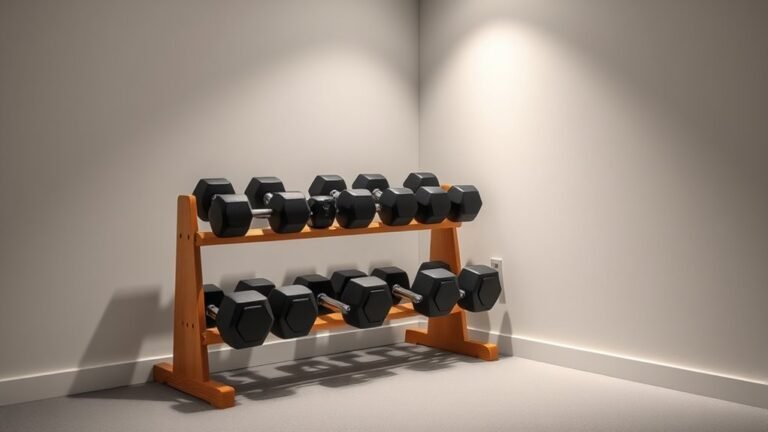Top Strength Training Moves for Men 40
For men over 40, strength training is key to maintaining muscle mass and overall health. Focus on compound moves like squats, deadlifts, and bench presses to maximize efficiency. Squats target your lower body and improve mobility; deadlifts enhance full-body strength while improving posture. The bench press builds upper body power, and overhead presses strengthen your shoulders. Don't forget rows for back strength and core exercises for stability, like planks and Russian twists. Prioritize form and allow for recovery time. With the right approach, you'll continue to build strength and confidence as you age—there's more to discover.
Key Takeaways
- Squats are fundamental for lower body strength, targeting quads, hamstrings, and glutes; perform 3 sets of 10-15 reps at least twice a week.
- Deadlifts enhance full-body strength and posture; aim for 3-4 sets of 6-10 reps, focusing on proper form.
- Bench Press builds upper body strength; use a grip slightly wider than shoulder-width, aiming for 3-4 sets of 6-10 reps.
- Overhead Press is crucial for shoulder stability; perform 3-4 sets of 8-12 reps while maintaining control throughout the movement.
Benefits of Strength Training
Strength training not only boosts your muscle mass but also enhances your overall health and well-being as you age.
By incorporating strength training into your routine, you'll increase your metabolism, helping you maintain a healthy weight. You'll also improve your bone density, reducing the risk of osteoporosis, which becomes vital as you get older.
Additionally, strength training enhances your balance and coordination, decreasing the likelihood of falls and injuries. It can even improve your mental health by reducing anxiety and depression, giving you a boost in confidence.
As you build strength, you'll find daily activities easier, allowing you to maintain an active lifestyle.
Key Considerations for Men Over 40

When approaching strength training after 40, it's essential to prioritize proper form and technique to prevent injuries and maximize results.
As you age, your body requires more time to recover, so listen to it and incorporate rest days into your routine.
Focus on compound movements that engage multiple muscle groups, building strength efficiently.
Consider your flexibility and mobility; incorporating stretching and mobility work can enhance performance and reduce injury risk.
Don't forget to consult with a healthcare provider before starting any new exercise regimen, especially if you have pre-existing conditions.
Finally, remember to stay hydrated and nourish your body with a balanced diet to support your training efforts.
Consistency is key, so stay committed and enjoy the journey!
Squats: The Foundation Move
Incorporating squats into your routine can greatly enhance your strength training regimen, serving as a fundamental exercise for overall fitness.
Squats target multiple muscle groups, including your quads, hamstrings, glutes, and core. By performing squats regularly, you'll improve your lower body strength, stability, and mobility, which are essential as you age.
Start with bodyweight squats to master your form, then gradually add weights for increased resistance. Make sure your knees track over your toes and maintain a straight back throughout the movement to avoid injury.
Aim for three sets of 10-15 reps, adjusting according to your fitness level. Remember, consistency is key, so integrate squats into your workouts at least twice a week for the best results.
Deadlifts for Full-Body Strength

Deadlifts are a powerhouse exercise that effectively builds full-body strength by engaging multiple muscle groups, including the back, legs, and core.
When you perform deadlifts, you're not just lifting weight; you're improving your posture and enhancing your functional strength, which is essential as you age.
To get started, stand with your feet hip-width apart, grip the barbell just outside your knees, and keep your back straight.
Engage your core, and lift the bar by driving through your heels, extending your hips and knees simultaneously.
Remember to lower the weight with control.
Aim for 3-4 sets of 6-10 reps, focusing on form over weight.
Incorporating deadlifts into your routine will lead to significant strength gains and overall fitness improvements.
Bench Press Techniques
After mastering deadlifts, it's time to focus on bench press techniques, which are key for building upper body strength and muscle mass.
Start by positioning yourself on the bench with your eyes directly under the bar. Grip the bar slightly wider than shoulder-width and engage your core. Lower the bar to your chest, keeping your elbows at about a 45-degree angle to your body.
Press the bar back up explosively while maintaining control. Remember to keep your feet flat on the ground for stability and avoid arching your back.
Incorporate variations like incline and decline presses to target different muscle groups.
Overhead Press for Upper Body

The overhead press is an essential exercise for building shoulder strength and enhancing overall upper body stability.
When you perform this move, you engage multiple muscle groups, including your deltoids, triceps, and upper back, which helps improve functional strength.
To get started, stand with your feet shoulder-width apart and grip the barbell or dumbbells at shoulder height. Press the weights overhead while keeping your core tight and back straight. Lower the weights back to shoulder level with control.
Aim for 3-4 sets of 8-12 reps, adjusting the weight as needed. Remember to warm up properly before your sets, and consider incorporating this exercise into your routine at least once a week for ideal results.
Rows for Back Strength

Rows are a powerful exercise that builds back strength and enhances your overall posture. Incorporating rows into your routine can help counteract the effects of sitting, which often leads to poor posture and back pain.
You can perform various types of rows—such as bent-over barbell rows, dumbbell rows, or cable rows—each targeting different areas of your back. Aim for two to three sets of 8 to 12 reps, adjusting the weight to guarantee you're challenged but maintaining good form.
Focus on squeezing your shoulder blades together as you pull the weight, engaging your back muscles effectively. Consistent practice won't only improve your strength but also support daily activities, making you feel more capable and confident.
Core Exercises for Stability

Incorporating core exercises into your routine is essential for enhancing stability and improving overall strength. A strong core supports your spine, aids in balance, and reduces the risk of injury.
Start with planks—hold a straight position for 30 seconds, gradually increasing the time as you get stronger. Side planks are great for targeting obliques, helping you maintain stability during other exercises.
Don't forget about dead bugs; they engage your entire core while promoting coordination. Finally, add Russian twists to improve rotational strength.
Aim to include these exercises two to three times a week, and you'll notice increased stability not just in your workouts, but in everyday activities too. Your body will thank you for it!
Questions
How Often Should Men Over 40 Strength Train Weekly?
You should strength train at least two to three times a week. This frequency helps build muscle, improve joint function, and maintain overall health. Listen to your body and adjust as needed for recovery.
What Equipment Is Best for Home Strength Training?
For effective home strength training, you'll want dumbbells, resistance bands, and a sturdy bench. Incorporating a pull-up bar and stability ball can enhance your workouts, ensuring you target various muscle groups for balanced strength.
Are There Specific Diets to Support Strength Training?
Absolutely, you need a balanced diet rich in protein, healthy fats, and complex carbohydrates. Incorporating lean meats, nuts, legumes, and whole grains will fuel your workouts and support muscle recovery effectively. Don't skip hydration, either!
How Can I Prevent Injuries While Strength Training?
Isn't it frustrating when injuries disrupt your progress? To prevent them while strength training, focus on proper form, warm up adequately, listen to your body, and gradually increase weights. Consistency and caution will keep you safe.
What Are Signs of Overtraining in Men Over 40?
If you're overtraining, you might notice persistent fatigue, decreased performance, irritability, sleep disturbances, and increased susceptibility to injuries. Pay attention to these signs, and consider adjusting your routine to allow for proper recovery and rest.
Conclusion
Incorporating these strength training moves into your routine can be a game changer as you navigate your forties and beyond.
You're not just building muscle; you're fortifying your foundation for a healthier life.
Remember, each rep is a step toward wellness, and consistency is your best friend.
So, lace up those sneakers, grab those weights, and embrace the journey ahead.
After all, you're not just getting older; you're getting stronger!







